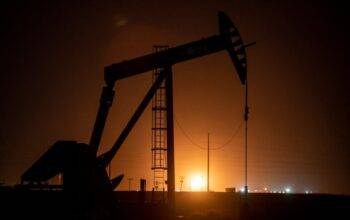For some years now, hydrogen has been considered as one of the important links in a carbon-free energy mix, particularly as a fuel. Knowing that hydrogen is currently a raw material for industry (in particular fertilizers) made from hydrocarbons or coal, there is still a long way to go.
All alternatives for the production of carbon-free hydrogen are currently being studied and we alerted you 2 years ago to the existence of natural hydrogen, generated among other things by the water/rock interaction in the subsoil. Production, relatively modest (1,400 m3/d), but continuous in Mali for almost 10 years, showed that reservoirs and covers existed for this type of gas. The pressure has never dropped in the reservoir operated, so it fills continuously.
Despite the efforts of the company Hydroma, which owns this permit, production has not however gone to an industrial scale, the political conditions in Mali being in particular too difficult. But the delineation of the field continues, three other reservoirs have been found at different depths, and other countries have taken up the subject: the taking of permits is increasing. In the United States, a discovery was announced by Desert Mountain in February 2022.
Update on the exploration of natural hydrogen
Emanations of natural hydrogen have been known on Earth for a long time, in the smokers of oceanic ridges and volcanic areas, but they are also found in cratons (very old rocks, more than half a billion years old) where they are often marked by depressions that can be mapped and studied. This has been done, for example, in Russia, the United States, Brazil and Australia.
Moreover, the oil and mining companies have a lot of subsurface data and, knowing that this new resource existed, went to review it. They discovered that many oil wells had hydrogen indices: there was a certain percentage of hydrogen in the gas mixture discovered, sometimes up to several tens of percent (up to 90% in Australia). In the York Peninsula, opposite Adelaide, a well drilled in 1930 found a gas containing more than 80% hydrogen. At the time, this is not what was sought, so the well had been filled in. Examples of this type can be found in many places, although the percentage of hydrogen is rarely so high.
Based on these data and the surface indices, companies have applied for exploration permits. Many of these companies are start-ups, some spin-ups from larger companies, some, but rarely, are energy majors.
However, to obtain a permit, the law must allow it and recognize hydrogen as a natural resource that can be explored and one day produced. It is therefore not only among geologists that we have worked on the question in recent years but also at the level of lawyers and governments. As expected, countries rich in mineral resources that support extractive industries have been the most responsive, led by the United States and Australia.
Australia at the forefront of exploration
It very quickly became apparent that Australia had great potential in natural hydrogen(6). The country is also active in other types of carbon-free hydrogen production (electrolysis, SMR or from coal but with CO2 capture) and has delivery commitments to Japan and Korea. The first liquefied hydrogen transport vessel began operating between Australia and Japan in January 2022.
Australia is a federal state and each state is responsible for its subsoil. South Australia adapted its subsoil rights from 2021 and applications for exploration permits have multiplied: two permits have been granted (Gold Hydrogen will in particular drill in 2023 and has taken over areas where hydrogen had already been found at the beginning of the 20th century) and more than twenty requests are being studied by the government (see the map below).
South of Perth (Western Australia), there are also many natural hydrogen indices and companies, including Buru and H2EX, have taken out licenses. In the center of the country, in the Amadeus basin (isolated and very far from consumers), the oil company Santos, which discovered a mixture of methane, helium and hydrogen, will drill 3 wells in 2023 to confirm the reserves (helium is a strategic gas which is very expensive – around $2,000/kg – and is therefore very interesting for the global economy).
And France?
The joint efforts of the entire profession to alert the public authorities on the subject resulted in February
2022 to the addition of natural hydrogen as a resource in the French mining code. This is a first step. On the resource assessment side, a lot of work had been started by TotalEnergies as part of a reassessment in the Pyrenees (Project Orogen), with many university laboratories.
This work revealed hydrogen emanations on the Pyrenean front and is currently being supplemented by a collaborative project between CVA, Engie, 45-8, BRGM and UPPA to assess more generally the potential of the New -Aquitaine. This project is supported by the region. On the other side of the Pyrenees, in Spain, the Helios company has taken out an exploration permit north of Zaragoza. The 45-8 company has obtained an exploration permit for helium in Nièvre but is also looking to see if hydrogen can be found in other areas, with or without associated helium.
Questions change…
Currently there is no more a congress on hydrogen or even E&P without a presentation on natural hydrogen. The AAPG (American Association of Petroleum Geologists) in Budapest in May had a session of 28 speakers on the subject and an AAPG entirely dedicated to hydrogen will be held this fall in South America. In France, H-Nat, the congress dedicated to natural hydrogen which was launched in 2021, made its second opus this year with nearly a thousand participants. The profession is also getting organized with the creation, among others, of EarthH2 by the Avenia cluster, which brings together European players in hydrogen in the subsoil.
In two years, we have gone from scientific questions “where does the hydrogen in the subsoil come from? », « Can hydrogen be a resource? to “Where to get exploration permits?” and “Who will be the first big producer?” “. Things are progressing very quickly… as often faster elsewhere than in France, and faster with dedicated start-ups than in large groups, but given the number of wells that will be drilled in 2023, the answer to these questions will come soon.




